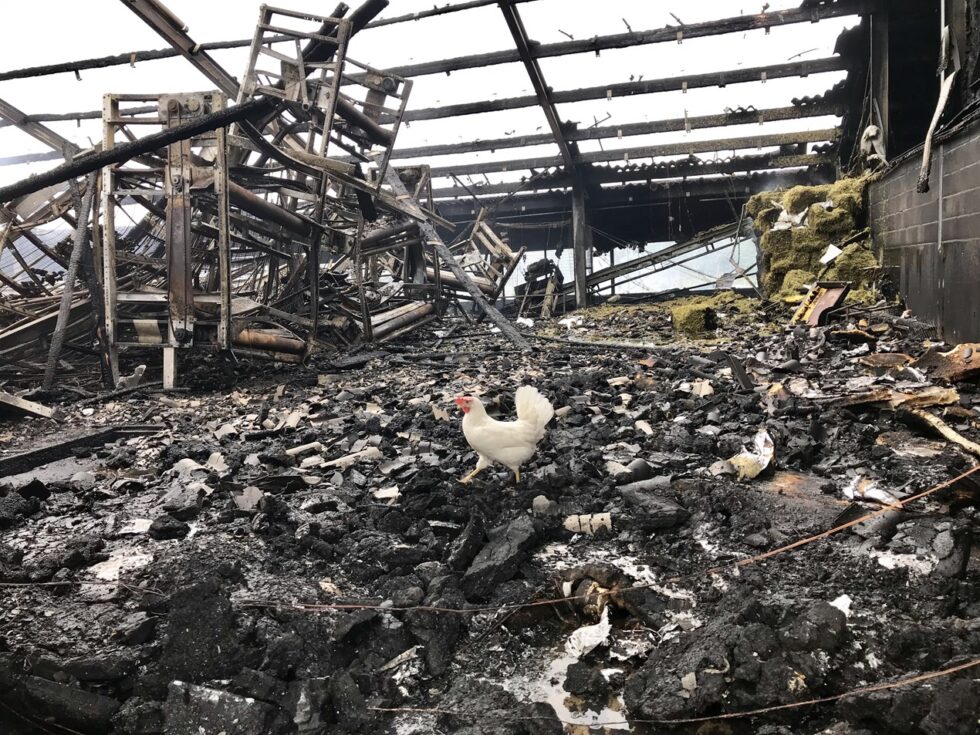
Barn fires
Over the past few years, hundreds of thousands of farm animals have died in barn fires. In the period between 2012 and 2020, there were on average 37 barn fires each year, in 17 of which animals died as a result. On average, 143,000 animals died each year, representing a total of almost 1.3 million. The consequences of a barn fire are often disastrous for the animals housed in the animal accommodation, and are also far-reaching for the livestock farmers. The animals burn alive, suffocate by smoke inhalation or suffer serious injuries. As a result, barn fires often awaken an emotional response from society.
Since there were no indications of a decline in the number of barn fires or the resultant animal deaths, in October 2019, the Dutch Safety Board decided to launch an investigation into barn fires. The Board’s aim in undertaking this investigation is to reduce the number of barn fires and the animal suffering caused as a result.
Insufficient attention for animal safety in barn fires
The Safety Board has seen a continuous growth in animal housing, a situation that further increases the likelihood of very large numbers of animals being killed in the event of a barn fire. Jeroen Dijsselbloem, Chairman of the Dutch Safety Board, commented, “Both within the sector and within government, there is insufficient attention for animal safety in the event of fire breaking out in the ever larger barns. This is one area in which the Dutch livestock industry must improve.”
Limited effect of initiatives
In 2011, the number of barn fires led the sector, the Dutch Society for the Protection of Animals (Dierenbescherming) and insurers to draw up action plans aimed at reducing the number of barn fires, and animal suffering. These action plans have not brought about the intended effects. The average number of animals that die in barn fires each year has in fact increased. In addition to these voluntary initiatives within the sector, the government laid down a number of statutory fire safety requirements in the Building Decree, in 2014. However, these building regulations apply only to new barns and renovated barns. There are almost no laws or regulations aimed at improving the fire safety of existing barns.
Risks of economies of scale
The Safety Board sees a real need to take a different look at livestock farming in the Netherlands. The fire safety risks are partly the result of the way in which animals are accommodated in factory farming: in large numbers in enclosed housing, without escape routes. To make matters worse, larger livestock farms are increasingly equipped with technical installations that in turn generate additional fire safety risks. This fact demands greater expertise among livestock farmers, in the field of safety management, similar to the requirements that apply for example in industry. It is up to government to impose requirements on the expertise of farmers that tie in with the size of the farm enterprise, and the risks present. The situation is made all the more urgent since due to growing economies of scale, livestock farmers are responsible for ever larger numbers of animals.
Make fire safety for animals compulsory
Reducing the number of barn fires calls for a new, more result-oriented approach. The Dutch Safety Board recommends that the Minister of Agriculture, Nature and Food Quality takes the lead in this development. This can for example be achieved by setting a target for livestock farmers to reduce the number of barn fires, and to make the taking of measures to improve fire safety for animals a legal requirement.
